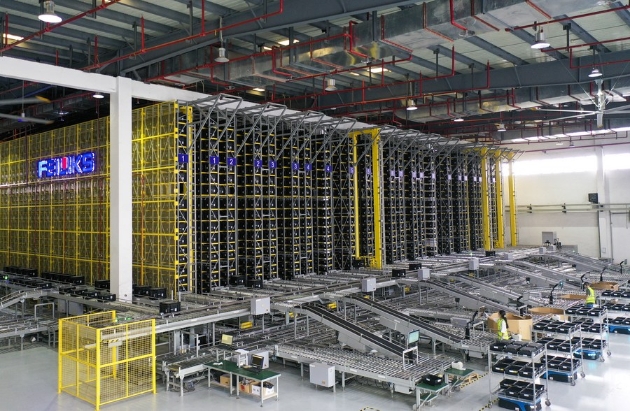Smart manufacturing drives China's high-quality growth
 0 Comment(s)
0 Comment(s) Print
Print E-mail Xinhua, November 26, 2022
E-mail Xinhua, November 26, 2022

At a large warehouse, robots carrying stacks of boxes were seen shuttling between high shelves and sorting the storage space autonomously with few workers in sight, offering a glimpse of the smart warehouse envisioned by Hai Robotics based in south China's metropolis of Shenzhen.
In six years, the startup has rolled out over 500 commercial projects in the storage robot industry, demonstrating the broad market appeal of smart manufacturing.
As China pursues high-quality development, the global manufacturing powerhouse expects to cultivate an upgraded manufacturing sector geared with advanced technologies to boost productivity and drive economic growth.
Xin Guobin, vice minister of industry and information technology, said that the country's scale of smart manufacturing equipment is close to 3 trillion yuan (about 420 billion U.S. dollars), with the number of system solution providers reaching 6,000.
According to a development plan on smart manufacturing, China will see 70 percent of its major manufacturing firms basically digitalized and networked and build more than 500 industry-leading smart-manufacturing demonstration plants by 2025. All of China's manufacturing firms above a designated size will be digitalized and networked by 2035.
Tech Boost
It takes a robotic arm just 70 seconds to tie up six rebar rods and assemble them into a cage-shaped structure that can later be used for construction. This is the latest technology adopted by China Construction Science & Technology Group Co., Ltd.
Compared with manual work, the robot workstation can boost production efficiency by four times and improve the yield rate to over 95 percent, said Jin Chengrui, an engineer with the company's smart manufacturing research center.
The company has also independently developed a robot for quality inspection. Equipped with infrared sensors, the robot can scan and collect data from building surfaces within 60 meters with an accuracy of 2 mm.
It can increase detection efficiency by more than 20 times and reduce costs by more than 95 percent compared to conventional methods, Jin noted.
In some places, smart technology in warehouses and sorting centers is already changing traditional business models.
Shenzhen's Huaqiangbei, one of the world's largest electronics markets packed with small shops selling all kinds of electronic gadgets, has embraced new supply methods, resulting in fewer carts transporting products and engineers searching for equipment parts.
With independently developed and high-efficiently smart warehouse and sorting systems, Shenzhen LCSC Electronics Technology Co., Ltd. handled nearly 10,000 orders daily on its e-commerce platform for electronic gadgets in Huaqiangbei, with the platform attracting 2.5 million registered users globally.
As another major manufacturing hub, Zhejiang Province now houses over 500 smart factories. From 2019 to 2021, their average production efficiency rose by 54 percent while the costs went down by 19 percent, local data showed.
Innovation Forward
Robotics research and production will likely facilitate the expansion of smart manufacturing applications.
In Shenzhen, a manufacturing hub, the total output value of the robot industry reached 158.2 billion yuan in 2021, with the total number of robotics enterprises reaching 945, according to the White Paper on Robot Industry Development issued by the Shenzhen Institute of Advanced Technology (SIAT) of the Chinese Academy of Sciences and Shenzhen Robotics Association.
Liu Zhiyuan, a SIAT researcher, said his team developed a soft tactile sensor and self-adaptive stress control technology which can greatly boost the flexibility of robots in complex operating environments.
Shenzhen has continued to ramp up efforts in fostering innovation to advance tech development, including setting up research alliances encompassing leading universities and research institutes.
"The next 15 years is the key period for developing core technologies of the new round of industrial revolution, such as industrial Internet and smart manufacturing," said Zhou Ji, an academician with the Chinese Academy of Engineering. "China's manufacturing industry should seize this opportunity to achieve leapfrog development."






Go to Forum >>0 Comment(s)